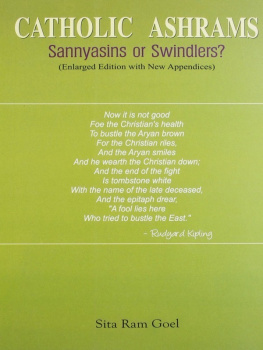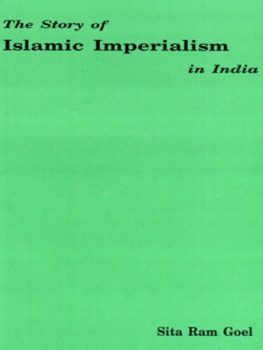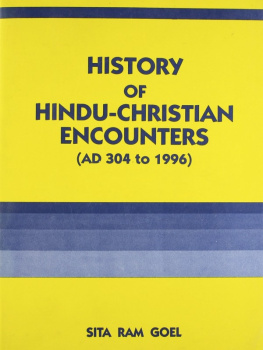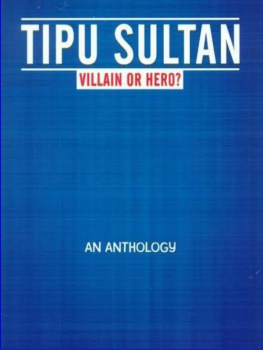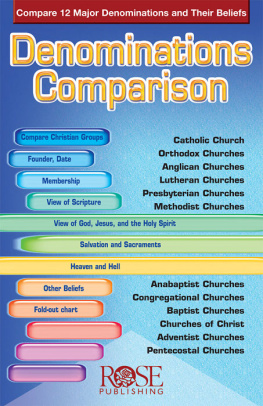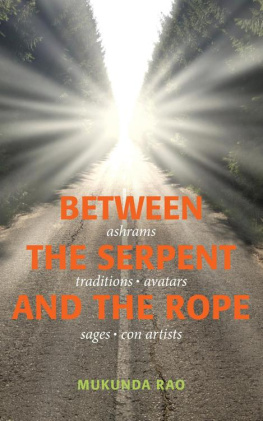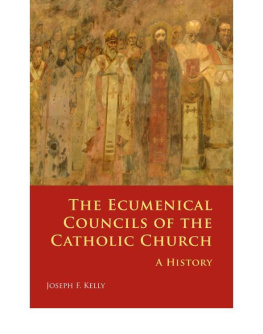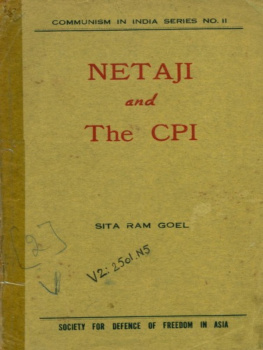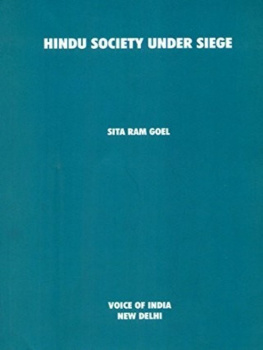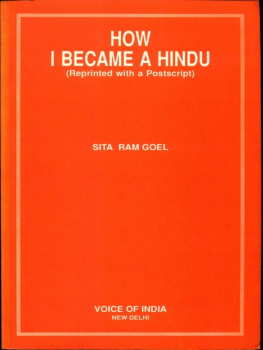Preface
Preface
I wrote to Hinduism Today that Voice of India would like to publish the articles in the form of a booklet for the education of Hindus, many of whom had been hoodwinked by this form of mission strategy. The permission was readily granted.
While these articles were getting printed, a friend in Madras informed me that a dialogue on the subject of Christian ashrams had developed through correspondence between Swami Devananda Saraswati and Father Bede Griffiths. He sent to me an article and some letters to the editor which had appeared in the Indian Express of Madras in March and April 1987, and triggered the dialogue. The letters to the editor were reactions from readers of the Indian Express.
I wrote to Swami Devananda and obtained from him copies of the letters exchanged. He also supplied a letter from Dr. Teasdale that had appeared in the Indian Express of June 1, 1987 and was a defence of Teasdale's earlier presentation. I found the material illuminating and immediately relevant to the subject I was planning to present for public discussion. Swami Devananda had no objection to Voice of India publishing the correspondence provided Fr. Bede Griffiths also gave his permission. He wrote to Fr. Bede who agreed readily and with grace. Swami Devananda then sent us copies of the last letters exchanged in October, 1987.
As I developed the Preface to the first edition and surveyed the mission strategies in the history of Christianity in this country, I realized that I was dealing with not only Catholic Ashrams but, in fact, with a whole movement known as the Christian Ashram Movement in the Christian Mission. Various Protestant missions were also practising the same fraud. But it was too late to change the title of the book because its main body had been already printed. I have retained the old title in this edition also because it has become well-known under this name not only in this country but also abroad, particularly in circles that control the Christian missions in this country. But I have made the subtitle more apt.
In this second edition, while all the old material has been retained, a lot more has been added. The earlier Preface has been expanded and rearranged into chapters with suitable headings. It now forms Section I of the book. In Section II which carries the earlier articles from Hinduism Today, two more articles from the same monthly have been added as appendices. In the earlier edition, there was only one dialogue, that between Swami Devananda and Fr. Bede. Now there are three dialogues, two more having been put together by Swami Devananda and brought to my attention. The dialogues form Section III of the present edition. Another valuable addition is Section IV which comprises letters exchanged between Fr. Bede and Shri Ram Swarup in early 1990. Three articles written by Ram Swarup in different papers and referred to by him in his letters to Fr. Bede have been reproduced as appendices to this section. Section V of this edition is more or less the same as Section III of the old one except for some changes in the numbering of the appendices and addition of a new appendix. The information which this section had carried earlier about Robert De Nobili has been transferred to the appropriate chapter under Section I. The other new features in the present edition are Bibliography and Index.
II
The first edition of Catholic Ashrams drew two sharp but opposite reactions from Hindu and Christian quarters.
Hindu readers by and large reacted favourably and welcomed the Hindu view of Christian missions. Some readers whom I had known for years and who had thought that Christian missions had undergone a change of character, were unpleasantly surprised. The only Hindu with whom I failed to carry weight was a noted Gandhian who refused to concede that there was anything wrong in what the Christian mission were doing. So unlike Mahatma Gandhi, I thought. I have found that for the Gandhians, by and large, Muslims and Christians are always in the right, and Hindus always in the wrong. I wonder if anyone of them has ever cared to read the Mahatma's works, and know that, no matter what his strategy of serving Hinduism happened to be at any time, his commitment to Hinduism was uncompromising.
On the other hand, my Christian friends whom I had known for many years, expressed pain and resentment at what I had written, particularly about Swami Abhishiktananda who had met me in 19
8 and known me rather well for years till he died in 1973. In our very first meeting I had told him in so many words that Jesus came nowhere near even the most minor Hindu saint, and that the missionary attempts to foist him on Hindus with the help of Western wealth, was nothing short of wickedness. He had never mentioned Jesus again, and our discussions had centred on Hindu philosophy of which he knew quite a bit, at least better than I did at that time. I had never suspected that he himself was a missionary and a part of the apparatus. It was only when I read his writings that I learnt the truth. I happened to be Treasurer of the Abhishiktananda Society in Delhi at the time the first edition of this book appeared. I told my Christian friends that we were in the midst of a dialogue, and that personal relations should not obscure ideological differences. But I have failed to impress them. Our relations are now correct but cold. Having been a student of Christian doctrine and history, I should have known that the post-Vatican II talk about tolerance and dialogue was intended to be a one-way affair.
A friend (not Koenraad Elst) has sent to me the relevant pages from a book written by a Christian lady and published from Leuven in Belgium. She has been rather kind to me. "While there has been," she says, "much sympathy and support from both the Hindu and Christian communities in India, Catholic ashrams have also confronted opposition. In Catholic Ashrams, Sita Ram Goel, a member of a fundamentalist movement within Hinduism which seeks to return to the pure Vedic religion, severely attacks and ridicules the phenomenon of Catholic ashrams I do not know what she means by "return of the pure Vedic religion". I know of no such movement in India at present. At any rate, I should like her to guide me to the movement to which I am supposed to subscribe. But she has represented me quite correctly when she says that I consider the Christian dogma of Jesus Christ being the only saviour as a devilish doctrine which Hindus will never accept. Readers of the two sentences I have quoted from her book can judge for themselves as to who is a fundamentalist. In any case, I should like to point out to this Christian enthusiast that fundamentalism is as foreign to Hinduism as honesty is to Christian missions.
Coming to Jesus Christ, I had written an essay on what the Christological research in the modem West has done to this mischievous myth. The essay was intended to be a Preface to this edition of the Catholic Ashrams. But owing to the wealth of detail which was needed to tell the full story of the Jesus of History yielding place to the Jesus of Fiction and finally leaving the fast dwindling number of believing Christians with the Christ of Faith (blind belief), the essay became too long and did not look suitable as a mere Preface. I have had to make the essay a separate book, Jesus Christ: An Artifice for Aggression, which is being published simultaneously with this edition of the Catholic Ashrams. Readers may regard the two books as companion volumes.
I end by mentioning a happy coincidence. When I sat down to write the Preface to the first edition of Catholic Ashrams, I ran into a lot of source material which enabled me eventually to write History of Hindu-Christian Encounters (1989), which, in turn, brought Koenraad Elst to me in December, 1989. This time, as I sat down to write the Preface to this edition, I ran into another lot of material which has enabled me to write

